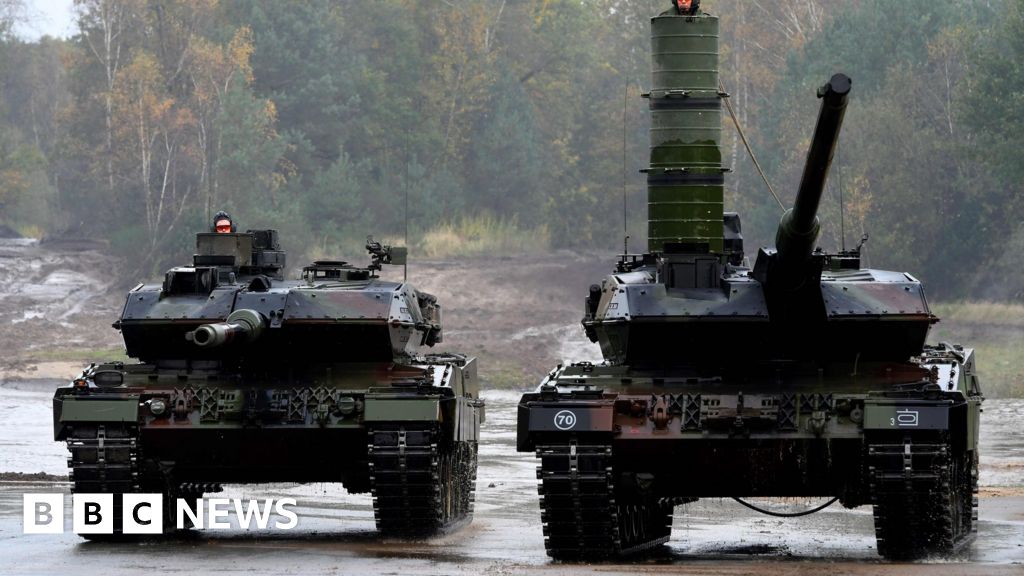Mind you the German navy has a frigate with a built in list, had 6 subs tied to the wall due to a lack of spare parts and it terrible serviceability rate for their AFV's
I've always found the 'modern' German military to be quite the paradox, although I do realize their spending priorities lay elsewhere.
They design/procure some of the best kit in the world, and procure in respectable numbers. However, a lot of that is supporting the local arms industry & keeping that plugging along, as it supports
thousands of both highly skilled specialist jobs as well as general labour, re: Leopard 2 MBT's, decent warship and submarine designs, various small arms, primary partners in Typhoon fighter project & A400M project, NH90, operator of a decent sized fleet of Sea Stallion family of helicopters, etc.
But once that kit is procured and in service, it's availability rate is absolutely abysmal compared to other countries that operate the same kit. At one point they had:
- maybe a squadron's worth of servicable Typhoons
- a squadron's worth of Stallions operating
- all 6 submarines currently tied up alongside awaiting general maintenance & now repair
- a ship that was delivered to them that was already listing to one side, in which the Germany Navy actually flat out immediately rejected until that was fixed (but I believe they were forced to accept it anyway, like a year or two later, with the issues only partially fixed.)
- Known design flaws with a recently built batch of frigates, which are the same class as the one above. (The vessel is already quite slim on the armament side, yet is also quite heavy which was adversely affecting it's propulsion system, limiting further add-ons. It was also quite top heavy, which made maneuvering it somewhat tricky in combat conditions, especially if seas were rough, etc)
On paper, the German military is very much a well rounded out force. But in reality, a lot of that kit isn't well maintained, or it is out of service pending some heavy re-investment. They have very much fallen into the same black hole we have -
the funding is there, but they are unable to use that funding efficiently as every MP and their 4yo child gets a say in how it is spent.
They've been solid at keeping core capabilities in good shape such as SOF, fighter aircraft available to scramble if required, and enough ships at sea to be present where they need to be and to contribute to both the NATO standing fleets as well as their EU commitments.
I think they figured out that IF Russia were to invade Europe (which won't happen, but it keeps certain industries churning along and the public scared enough to support it) - Russia has to go through several other countries before they get to Germany. In the meantime, they can focus their spending elsewhere. And if that ever happens, they'll get those spare parts coming in and get the big green machine chugging along again. Having roughly 22,000 US Army troops stationed there, with the US having 11 bases there in total when you include USAF & USMC, makes those decisions to save money on maintenance/spare parts a lot easier.
(Germany's social programs & social safety net are amazingly generous, to the point it truly isn't sustainable and they know it. It has got to the point where their social spending is so far above and beyond, a big chunk of it actually doesn't benefit them at all. As a German taxpayer, I would be furious - both that it has become so out of control, and that Germany itself doesn't see any sort of return on big chunks of those investments.)
**To give you an example, I currently have a good friend who is living in Germany. She is completing her PhD in physiotherapy, because post-secondary/university is free in Germany. Not only is it free, it's free to anybody who wants to move there & attend, not just German citizens. So her PhD is free, and she is being paid €900 a month on top of that which pays for her somewhat small yet still comfortable, reasonably modern apartment. She also gets a discount on her rent, because she is a student.
So she ends up with about €150 in her pocket for her own spending each month, a free apartment and free PhD. She is not a German citizen, nor even a permanent resident. She applied for a student visa, which she was approved for & received in less than a month.**
My main point, on topic, is that Germany knows the Russians aren't invading anytime soon. So minus a few fighters on alert to scramble, a token ship sailing around with a standing NATO fleet or two, and keeping their SOF well-funded - the German military on paper is NOT the German military you'd come into contact with if you were trying to invade.
0.02
The German Armed Forces, or the Bundeswehr, are neither “structurally capable nor equipped” for the military defence of the NATO alliance.

www.strifeblog.org
And Berlin only has itself to blame.

nationalinterest.org
The report highlights numerous issues with the Bundeswehr, including disrepair and a lack of staff.

www.bbc.com

 militaryleak.com
militaryleak.com


 militaryleak.com
militaryleak.com










